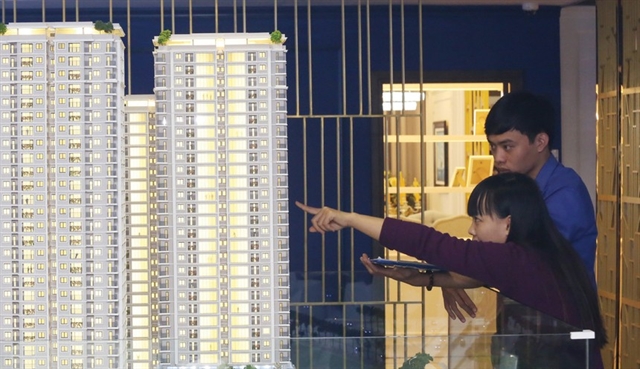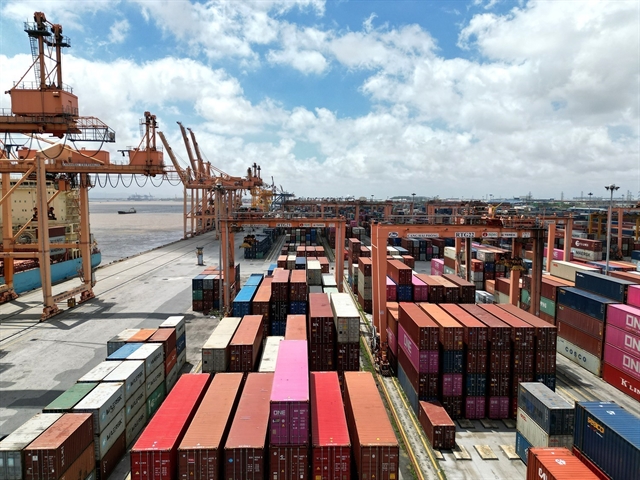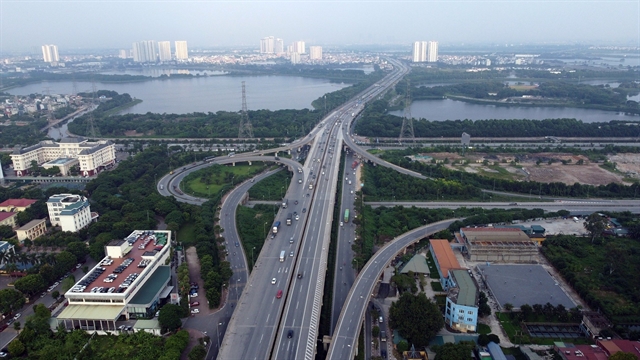 Business Beat
Business Beat

The central bank has instructed commercial banks to maintain credit growth in these sectors within safe limits.
 |
Complied by Thiên Lý
Huỳnh Quang Khánh invests in real estate by leveraging credit.
Seventy per cent of his investment comes from banks. He has borrowed VNĐ1 billion at an interest rate of 9.5 per cent from a bank in Tân Phú District and also asked some of his relatives to borrow on his behalf from that bank.
Khánh, 54, of HCM City’s Tân Phú District, said he was told by the lender that the interest rate had been increased to 12 per cent.
“I am looking to sell some of my land to reduce the loans because I am afraid the interest rates would continue to rise and I will be unable to afford,” he said.
While Khánh complains about the increase in the rates, Nguyễn Công Tặng of Thủ Đức District is unhappy that a bank refused to lend him 70 per cent of the value of a house he wants to buy.
He said in the past the bank was always ready to lend him the money but now they are only willing to lend half.
Market observers say interest rates on loans for home purchase, improvement and construction at many banks have increased by around two percentage points in recent months.
Borrowers now have to pay around 12.5 per cent for medium-term real estate-related loans.
The loan amounts have been reduced significantly and are no longer 70 per cent of the value of the asset.
This follows the State Bank of Việt Nam’s requirement that commercial banks have to tighten credit to the stock and real estate markets.
The central bank has instructed commercial banks to maintain credit growth in these sectors within safe limits.
It has also instructed them to monitor borrowers’ finances and the progress of their projects in the case that housing developers are borrowers.
Lending should go hand in hand with careful supervision to ensure loans are used for the purposes they are intended for and do not add to the bad debts, it has said.
Banks should shift their focus from “risky areas” to agriculture and industry, with priority on exports, supporting industries and high-tech investments.
Loans in the city total around VNĐ220 trillion (US$9.7 billion) now, of which 28.7 per cent, or VNĐ63.14 trillion ($2.8 billion), is in real estate and personal loans are also used to buy property.
An estimated VNĐ261.41 trillion was injected into the city’s real estate market last year, up VNĐ15.14 trillion from 2016.
Nguyễn Hoàng Minh, deputy director of the SBV’s branch in HCM City, says many banks have taken on board the central bank’s warning about lending to high-risk sectors such as real estate, particularly to projects in areas where land prices have surged, like districts 9, Cần Giờ, Củ Chi, and Hóc Môn.
They are now hiking loan interest rates or reducing loan amounts to 30-50 per cent of the value of the assets.
A senior banker also reveals that most banks, including, his do not accept assets in high-risk areas as collateral for loans.
But have these measures had an effect on property prices?
Analysts point out that property prices are unlikely to fall right away, pointing to their cyclical nature.
The market has gotten used to the new price levels and they would take a lot of time to come down, they said.
Ambitious targets but coal exports to remain difficult
Deputy Prime Minister Trịnh Đình Dũng has approved a coal export plan for the Việt Nam National Coal and Minerals Group (Vinacomin) and Northeast Corporation for this year.
Proposed by the Ministry of Industry and Trade, it allowes them to ship more than two million tonnes.
Vinacomin has also got permission to sign long-term contracts to export high-quality coal cobbles and dust with calorific values ranging from 6,700 Kcal/kg to 7,950 Kcal/kg and a maximum 19 per cent ash content to traditional markets Japan and South Korea.
An official said the ministry wants to focus on exporting high-quality coal because domestic consumption of this variety is modest.
Use of this kind of coal in thermal power plants does not offer any advantage or value, meaning it is a waste of the country’s natural resources, he said.
In fact, export of one tonne of high-quality coal cobbles and dust would fetch the equivalent of 1.2-2 million tonnes of ordinary coal dust, which can instead be used to generate power without any loss of efficiency.
But analysts said it would not be easy, particularly for Vinacomin and Northeast Corporation, to achieve the target of exporting more than two million tonnes.
They also listed some reasons to explain why the target would be hard to achieve.
China is one of Việt Nam’s major coal export markets, but it has begun to impose strict conditions with regard to mercury, arsenic, phosphorous, chlorine and fluorine contents coal since last year, they said.
As a result, Vinacomin was unable to export two million tonnes to that country last year as targeted.
China has shown no indications of removing those technical barriers, meaning exports to the market remains difficult.
The ministry hopes Vinacomin can sign long-term contracts with Japanese buyers for high-quality coal until 2025 since it would also mean an opportunity to secure more loans from Japan for importing raw materials and equipment used for coal and power projects.
Now Vinacomin is permitted to sign contracts to export coal to Japan only until 2020 to ensure control over the exports.
Food processors expect big boost from new policy
In February, the Prime Minister issued a decree to guide a number of provisions in the Law on Food Safety.
The decree is expected to improve the business climate since it supersedes an earlier decree that many had complained was so complicated, and waste money and time, but still failed to ensure food safety.
The new decree eliminates around 30 per cent and 50 per cent of existing administrative procedures and business conditions.
Among other changes, the new decree allows firms to announce their product quality by themselves instead of asking for certification from authorised agencies as stipulated by the earlier decree.
Furthermore, companies’ operations are not dependent on authorised agencies any more since the new decree removes ambiguities in regulations and spells out administrative procedures in line with the Government’s development strategies.
Analysts said the new decree would enable food processors to reduce administrative expenses by 90 per cent, which helps save 10 million man days and around VNĐ3.7 trillion.
The time needed for firms to complete paperwork has been cut from 15 days to just seven.
Other important administrative changes include a switch from pre-production to post-production checks and permission for not only State-owned businesses but also private ones to announce their product quality criteria.
But businesses want the Government to make further improvements.
For instance, the length and frequency of tests done on plant and animal samples for quarantine purposes remain too high and should be further reduced from the current 24 hours to ensure the products remain fresh for selling in the market, they said.
Experts said Việt Nam’s recent signing of the Comprehensive and Progressive Trans-Pacific Partnership would bring plenty of opportunities to Vietnamese food businesses.
Proper administrative reforms would help the food firms improve their competitiveness in the enlarged market, enabling them to fully tap the opportunities, they said. — VNS



.jpg)





